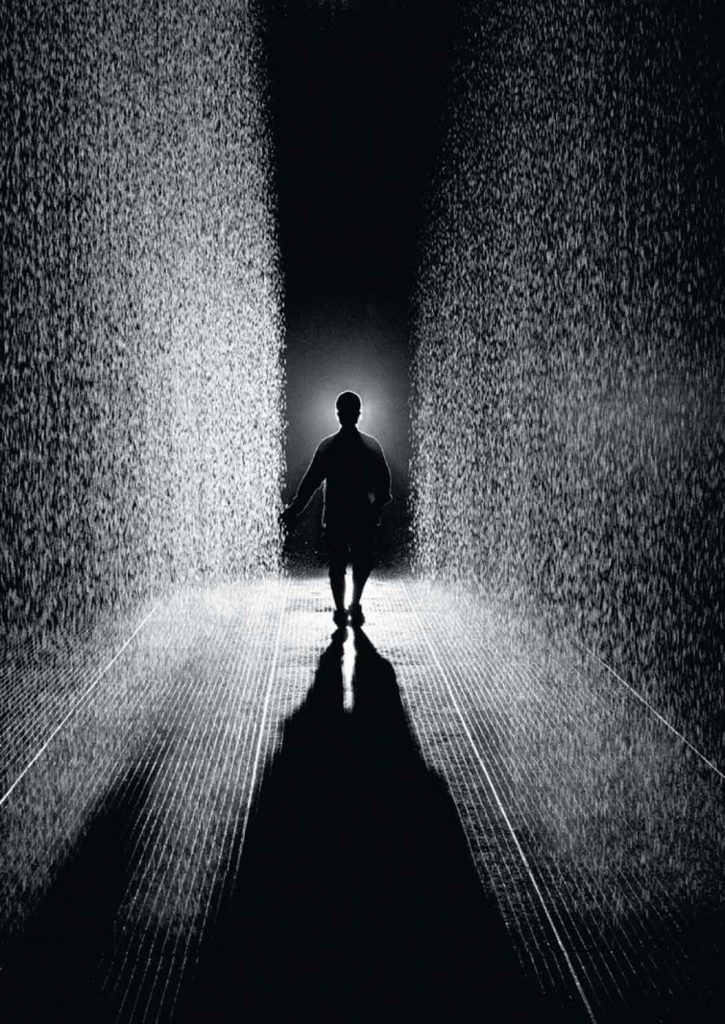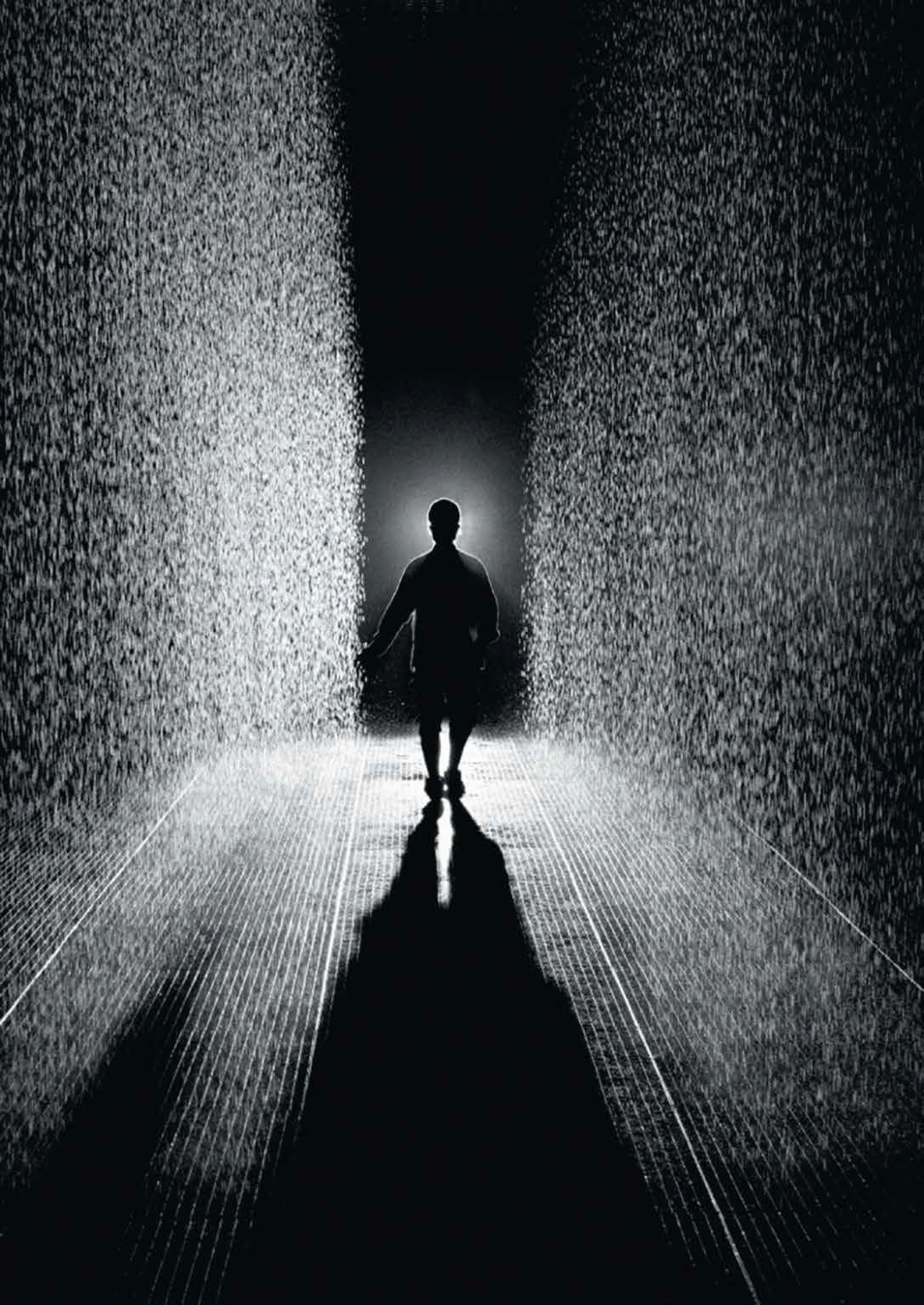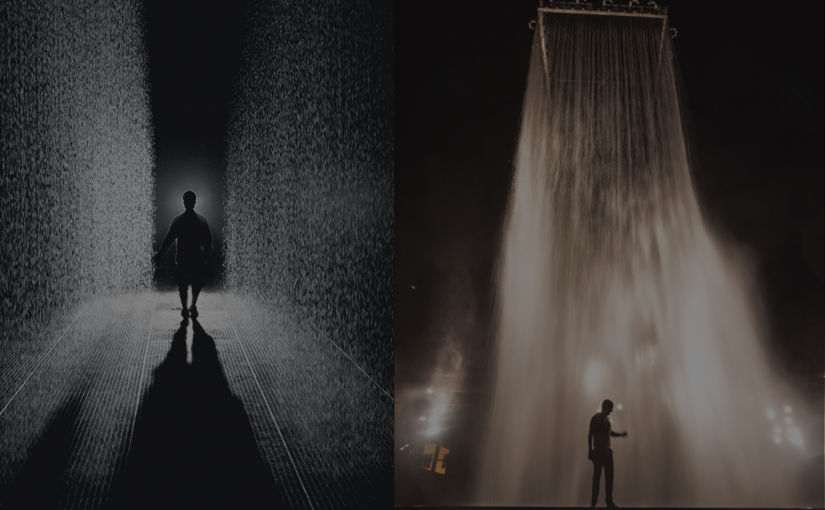Category: History of Design – G2
hyperessay // Rain Room by rAndom International
The rain is a beautiful, natural phenomena that brings hope to many people. I don’t know about you, but I have always dreamed about dancing in the rain, like in the movie “Step Up”.
However, I tried running in the rain before, and it wasn’t a pleasant experience. The force at which the rain plummets to the ground, can be quite painful on the skin. Not only that, it can get really difficult to see through the rain.
A group of London-based artist from Random International have created the “Rain Room” which could make dancing, walking or running through the rain much more enjoyable.
The Rain Room allows visitors to experience the sight, sound and smell of a continuous downpour whilst being protected from the rain without the use of an umbrella. The immersive installation uses approximately 2000 liters of filtered, recycled water to create the simulation of a rainfall. It makes use of 3D motion sensor tracking cameras placed on the ceiling. When human presence is detected, it sends a signal to the water nozzles on the ceilings to stop the flow of water approximately around six-foot radius of the human, leaving them dry.
The installation encourages visitors to become performers and controllers of the art. In the Rain Room, “a seemingly intuitive relationship develops between visitor and artwork, man and machine.” This relationship is an overarching theme in many of their works. They use their art to investigate the human response towards automation.
There is no doubt that the Rain Room relies on the interaction of the audience. The design itself was build for the purpose to encourage audience to interact with the artwork. The artist created a two-way communication channel between the audience and machine, where the location of the audience detected by the 3D motion sensor tracking cameras informs the water nozzles to stop the flow of water. Every time the audience move, a new signal is being sent. Making it a form of behavioural art where it is responsive to the actions of the audience. Thus, the audience become the subject of the artwork.
Essentially, the artwork remains at a standstill without audience’s interaction, making the audience a crucial factor in an artwork. By allowing the audience to take part in the artwork, they are not only viewers but somewhat become artists themselves. In my opinion, I think that is why people are so intrigued by interactive installations. As compared to viewing a completed painting, people naturally gravitate towards art where they can add meaning to it.
Interestingly, the artist embraces the idea of entropy. Knowing that the machine they build isn’t perfect, they encourage audience to attempt to outrun the machine. In one of their interviews, they mentioned how they found it interesting to hear the comments of audiences regarding the malfunctions of the Rain Room when it let slips a drop of water on their heads.
“That is a really typical natural thing with machines. When algorithms become physical, you encounter all their physical messiness and their imperfections.”
Never actually having visited the installation, nonetheless, I can presume that it is an immersive experience. The multi-sensory experience is what allows for such an immersive experience. The Rain Room is not only a visual experience, but it deals with sounds, smells and touch. The ability for the audience to control the artwork adds to the immersive experience of the Rain Room.

As compared to a virtual or augmented reality where audience have to put something on, the Rain Room connects with the physical self rather than the conscious mind. The audience is physically present inside the artwork without any equipment that they have to put on. In some way, I think this allows for a very real experience that VR may not be able to offer. For example, some graphics of a VR game does not resemble the real world, hence you’ll be able to differentiate between what is real and what is not. However, with the Rain Room, because it is happening in real time and space, the immersive experience is extended.
The Rain Room is a perfect example of how there is a shift in art towards audience participation or interaction with the use of digital technology. The trend towards making use of technology in artworks is growing exponentially. As we studied the History of Interactive Design, we see how people in the past made use of the advancement of technology to create a different experience in art such as the Sensorama, Aspen Movie Map, Osmose, and many more. With the continued advancement of technology, interactive art will also progress together. In my opinion, we are starting to see a revolution of interactive art in the art world. It is only the beginning, and in the future, we could possibly see interactive art revolutionize the world.
References
https://www.random-international.com/rain-room-2012
http://www.digitalmeetsculture.net/article/rain-room-at-londons-barbican/
https://www.moma.org/calendar/exhibitions/1352
https://www.smithsonianmag.com/smart-news/los-angeles-rain-room-180957095/
hannes koch & florian ortkrass.
Founders of Random International, a group of London-based artists who combined technology and natural elements to create temporary, interactive installations.
famous artworks:
Rain Room

Walk through rain without getting wet. Sensors on the floor detects a human body which will pause the falling water.
Tower
The rain shower installation.






